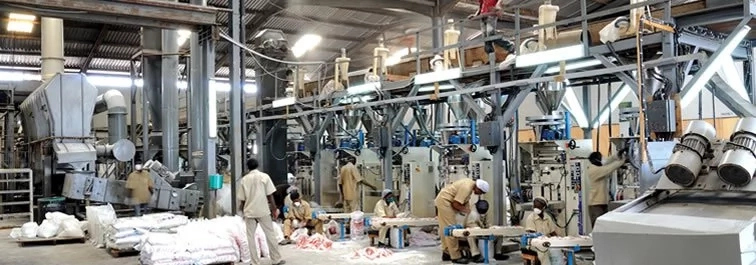Steps To Set Up Salt Refinery In Nigeria
Here in this post, we are going to give you detailed Steps To Set Up Salt Refinery In Nigeria. We hope you find this article informative and insightful.
Salt is used to improve the taste of food and also to preserve food from getting spoilt. It serves as raw material for many manufacturing industries and also an ingredient in the manufacture of some chemicals. It has been statistically reported that salt has more than 14,000 uses.
👉 Relocate to Canada Today!
Live, Study and Work in Canada. No Payment is Required! Hurry Now click here to Apply >> Immigrate to CanadaRead Also: 15 Impact of Technology in Nigeria

Salt is widely being used in the following:
- Human Consumption
- Ice & Cold Storage
- Curing & Tanning of hides & skins
- Textile Dyeing
- Aluminium Industry
- Animal Consumption
- Water Softening
- Dyes & Colours
- Soda Ash Industry
- Road Delving
- Chloralkali Industry
- Food & Fish preservation & processing
You can clearly see that salt is very important and so in this article, I am going to walk you through the steps of setting up a salt refinery in Nigeria.
Note that you don’t just get salt from its natural state and start using it without refining it. It is important you get this first-hand information before you delve into it.
Read Also: 9 Steps to Produce Salt in Nigeria
Step 1: Get A Good Site for the Refinery
It is expedient you choose a very nice site for the salt refinery. It is not just any location that is good for it, you have to consider a location where you can easily get salt.
There are different states in Nigeria where you can get salt like Sokoto, Katsina, Imo, Anambra, Cross River, Benue, Akwa Ibom, Abia, Nasarawa and Ebonyi state.
All these states are nice sites for setting up salt refinery but among them, Ebonyi has the largest lake for salt deposit, so in choosing your site for setting up the salt refinery, put this into consideration too.
👉 Relocate to Canada Today!
Live, Study and Work in Canada. No Payment is Required! Hurry Now click here to Apply >> Immigrate to CanadaIf the source of the natural salt is far from where the refinery is, then you would have to spend extra charges in transporting the raw material to the refinery site.
Step 2: Get Your Equipment Ready and Study How to Make Use of Them
There are some equipment that are needed for the salt refinery which you need to purchase and also learn how to use them.
Even though you will need to employ staff that will work in the salt refinery, but it is necessary you have good knowledge of the equipment so that you can be able to handle anyone in the absence of any staff or when the need arises.
The Equipment
1. Salt washing machine: This machine is used to wash the raw salt; it has the ability to distinguish between the soluble and insoluble impurities in the raw salt. It is designed to wash the salt crystal efficiently.
2. Vacuum Salt Plant: This is the machine used in boiling the salt. It uses a multiple-effect evaporating system; this helps to save energy during the heating process.
3. MVR Salt Evaporating & Crystallizing Plant: This is another machine that helps in the boiling process. In this machine, the vapors that evaporated from the evaporating chamber goes into another chamber to remove most of the brine that was carried and it goes to a scrubber to wash away the remaining brine drops. After this, the clean vapor then goes to the mechanical vapor re-compressor which will, in turn, compress it back to the required temperature. The process continues like that until it gets to the final stage.
4. Mechanical Salt Refinery Plant: This plant takes care of salt washing, salt crushing, and salt impurity separation. The main duty is to break up the big salt granules in order to expose all the impurities embedded and wash them out from the granules. After washing the salt, it is passed through the drying system in order to get the required moisture content required by consumers. Then the salt is sieved so that different sizes of granules can be obtained. This is how cooking salt, table salt, industrial salt, and others are obtained.
Read Also: Analysis of Starch Market in Nigeria
Step 3: Know The Process of Salt Refining
Just like other areas of manufacturing has processes, salt refining also has definite processes. To set up a salt refinery, you need to have a good working knowledge of the different processes salt passes through before it gets refined. Salt refining passes through eight (8) distinctive processes and I am going to take you through the processes.
- Raw Salt Feeding
- Salt Washing & Milling
- Dosing of Additives & Coating
- Centrifuging
- Drying
- Sizing & Conditioning
- Packing
- Brine Recycle
Firstly, raw salt is poured into the raw salt hopper through the stockyard or directly unloaded from the dumper. Under this hopper, there is something called feeder, it is this feeder that feeds material to the conveyor. The conveyor has the duty of removing iron pieces like nails, bolts and nuts and other magnetic debris that came with the raw salt. The conveyor is able to do this because it has a magnetic separator.
Secondly, the wet mill is allowed to control the size of the product and also helps to remove any soluble that is trapped in the impurities. Brine is introduced at this stage to achieve the result desired.
Thirdly, the salt slurry is introduced for centrifuge and from there, the salt cake is formed, which is in turn taken up by the screw feeder.
At the stage, the salt cake that had been taken up by the screw feeder is introduced to iodine and other additive anti-caking agent and then passed unto the fluid bed dryer.
Fluid bed dryer is widely accepted for drying salt cake. It has two sections where one is responsible for heating and the other is responsible for cooling the product. Salt that comes from the outlet of the dryer is then carried by the bucket elevator for sizing and conditioning.
When the salt is dried, it is fed into the Gyro screen and if there is any oversize from the screen, it is sent to a dry mill for regrinding. Those that are of normal size are fed to the blender so that they can be conditioned to make them flow easily.
The final product that comes from the blender is stored in Silo. This helps the packing machines to pack the final product in different sizes as desired.
Read Also: How To Start A Packaging Company In Nigeria
Step 4: Get Your Refinery Registered With Cooperate Affairs Commission
As soon as you have gotten all the necessary things needed both in terms of knowledge and equipment, the next stage is to get your refinery registered with the body that is in charge of company registrations in Nigeria popularly known as CAC
After registering with CAC, you might need to also register with NAFDAC to get your salt certified for human consumption.





